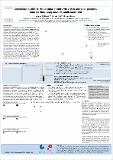Files in this item
Optimising the REE-Zr-Nb potential of eudialyte and its alteration products in the Ilímaussaq complex, South Greenland
Item metadata
| dc.contributor.author | Borst, Anouk Margaretha | |
| dc.contributor.author | Mortensen, Henrik Friis | |
| dc.contributor.author | Finch, Adrian Anthony | |
| dc.date.accessioned | 2017-01-06T12:30:13Z | |
| dc.date.available | 2017-01-06T12:30:13Z | |
| dc.date.issued | 2016-12-19 | |
| dc.identifier | 248698048 | |
| dc.identifier | 45619f04-65c8-4710-9531-0bc1ae94b543 | |
| dc.identifier.citation | Borst , A M , Mortensen , H F & Finch , A A 2016 , ' Optimising the REE-Zr-Nb potential of eudialyte and its alteration products in the Ilímaussaq complex, South Greenland ' , Mineral deposit study group , Bristol , United Kingdom , 19/12/16 - 21/12/16 . | en |
| dc.identifier.citation | conference | en |
| dc.identifier.other | ORCID: /0000-0002-3689-1517/work/38002309 | |
| dc.identifier.other | ORCID: /0000-0003-0775-1491/work/65014428 | |
| dc.identifier.uri | https://hdl.handle.net/10023/10056 | |
| dc.description.abstract | Eudialyte-group minerals are complex alkali-zirconosilicates that crystallise in peralkaline igneous rocks known as agpaitic nepheline syenites 1. They provide important unexploited resources for rare earth elements (REE) and other critical metals such as Zr, Nb and Ta1,2,3,4. Europe hosts significant eudialyte deposits in rift-related alkaline intrusions, e.g. Ilímaussaq (Greenland), Lovozero and Khibiny (Russia) and Norra Kärr (Sweden)5. With relatively high contents of the more critical heavy REE, and low U and Th contents compared to conventionally exploited REE phases, eudialyte is particularly attractive as a more sustainable source of REE. | |
| dc.format.extent | 1 | |
| dc.format.extent | 7723322 | |
| dc.language.iso | eng | |
| dc.subject | GB Physical geography | en |
| dc.subject | QE Geology | en |
| dc.subject.lcc | GB | en |
| dc.subject.lcc | QE | en |
| dc.title | Optimising the REE-Zr-Nb potential of eudialyte and its alteration products in the Ilímaussaq complex, South Greenland | en |
| dc.type | Conference poster | en |
| dc.contributor.institution | University of St Andrews. Earth and Environmental Sciences | en |
| dc.contributor.institution | University of St Andrews. Marine Alliance for Science & Technology Scotland | en |
| dc.contributor.institution | University of St Andrews. Scottish Oceans Institute | en |
| dc.contributor.institution | University of St Andrews. St Andrews Isotope Geochemistry | en |
| dc.description.status | Non peer reviewed | en |
This item appears in the following Collection(s)
Items in the St Andrews Research Repository are protected by copyright, with all rights reserved, unless otherwise indicated.

